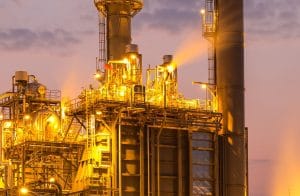 All industries have their unique considerations when it comes to their use of technology. Their specific technological solutions, processes, and investments all differ, but in all industries, companies seek to improve the efficiency, reliability, and safety of their technologies to be more competitive. In industries that operate in hazardous locations, utilizing technology to its ultimate benefit is much more challenging. Companies have to balance efficiency and productivity with consistently high levels of safety, both for employees and the technologies they interact with.
All industries have their unique considerations when it comes to their use of technology. Their specific technological solutions, processes, and investments all differ, but in all industries, companies seek to improve the efficiency, reliability, and safety of their technologies to be more competitive. In industries that operate in hazardous locations, utilizing technology to its ultimate benefit is much more challenging. Companies have to balance efficiency and productivity with consistently high levels of safety, both for employees and the technologies they interact with.
Electrical cooling in hazardous environments
Electrical thermal management needs have grown exponentially in each new iteration of technology, and older forms of electrical cooling are often unable to keep up. Solutions like air conditioning and air compressing can be costly to keep running, which is why companies in most other industries have long ago upgraded their cooling systems to heat exchangers and other custom thermal solutions. In other industries, however, the high levels of efficiency and rapid heat transfer capabilities of common heat exchangers aren’t always accompanied by the high levels of ingress protection and other safety measures required to operate in hazardous locations.
The streamlined methods of modern heat exchangers
For companies that already utilize heat exchangers, the advantages of heat exchangers range from improved cooling capabilities at much lower costs, and with little or no maintenance. Compared to more cumbersome cooling solutions, this means companies can keep their technological solutions cooled more consistently and without exorbitant amounts of energy. They accomplish this by utilizing principles of transferring electrical waste to prevent it from accumulating within electrical enclosures. This eliminates the need to utilize chilled air to cool electrical enclosures, as well as the many different complications that come with maintaining such solutions.
Making heat exchangers work in hazardous locations
To bring the benefits of more streamlined thermal management to companies that operate in hazardous locations, many heat exchangers today are designed specifically to meet UL/cUL, ATEX, and IECEx standards, making them optimal for use in more volatile situations. This includes specially outfitted, custom-designed heat exchangers that can provide high-performance cooling without allowing contaminants into the heat exchanger unit or electrical enclosures, including volatile components in the air such as chemicals and debris. Because streamlined heat transfer methods can operate continuously with little or no maintenance, they also make routine equipment maintenance simpler and safer for maintenance crews.
For more information about streamlining thermal management in hazardous locations, call Noren Thermal Solutions in Taylor, TX, at 866-936-6736.







